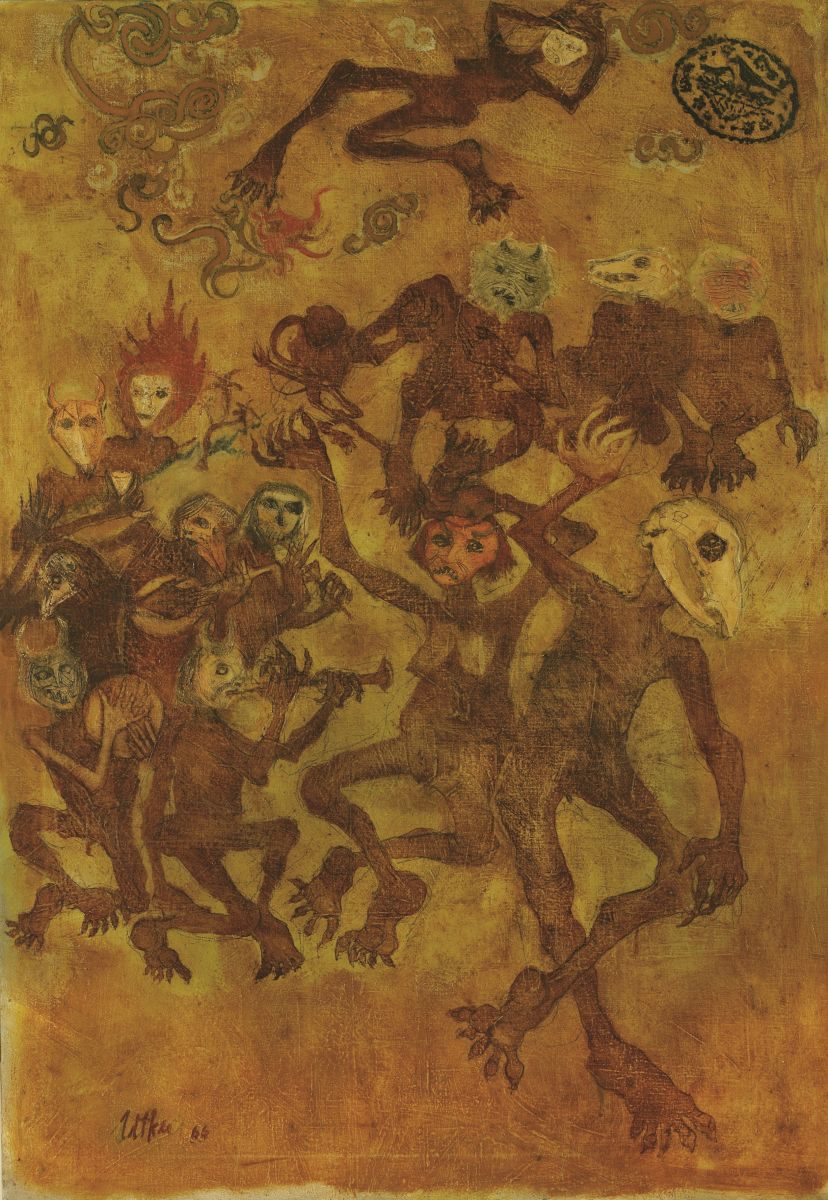- Open Today: 10.00–18.00
- Ticket
- Shop
- Membership
- TR EN

Utku Varlık, 1942
Witchcraft, 1966
Utku Varlık entered the Academy of Fine Arts in 1961 and studied painting in the studio of Bedri Rahmi Eyüboğlu and engraving and lithography in the studio of Sabri Berkel. He graduated in 1966, and four years later went to the École des Beaux-Arts in Paris on a government-funded scholarship to study under the painter Georges Dayez. He subsequently did work in lithography at the Cachan studio. Since 1975, the artist has been living and working in Paris.
While in his early paintings Varlık adopted a more expressionistic approach, his paintings after 1975 evidence a tendency to blur the line between dream and reality. They play with the relationship between light and shadow, elements of nature, symbolic depictions, and the indeterminacy of the concepts of space and time. Faces that are only partially visible, half-objects, distant structures, and unknown sources of water and light form mysterious compositions that draw the viewer in just like a dream. Literature, and especially poetry, from Turkey and other parts of the world counts among Varlık’s sources of inspiration.
Showing influences of the fifteenth-century Islamic painter Mehmed Siyah Kalem, “Witchcraft” originates from a multicolored dream. It draws on miniatures and magical and religious stories but is not a part of any one world; indeed, it jumps from one field to another without repeating familiar conventions. Varlık fills his paintings with distilled knowledge while using light as a language that transcends image. A magical dynamism, an ingenuous awareness, and a richness of metaphorical power all characterize his paintings.
Painting
Oil on canvas
Dr. Nejat F. Eczacıbaşı Foundation Collection
Istanbul Museum of Modern Art / Long term loan